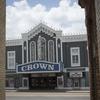Canadian real estate is increasingly being scooped up by investors, and incentives play a large role. That was the take in the latest report from the Canadian Housing Statistics Program (CHSP) at Statistics Canada (Stat Can). The agency’s latest numbers show that up to 85% of condo apartments in Ontario’s ten largest census metropolitan areas (CMAs) were investor-owned in 2022. More surprisingly, the CHSP attributes this boom in part to large, single corporate investors fueled by government incentives. The share owned by investors may actually rise in coming years, as even more incentives are being rolled out by various levels of government.
Investors Own Over 2 In 5 Ontario Condos, They Bought Most Of The New Supply
Ontario real estate investors are consuming an even bigger share of the condo market. They owned 43.5% of all condo apartments in the province, up 0.9 points from a year before. As high as that is, those numbers imply that 65% of new condos added in the province that year are owned by investors.
Those who assume investors target big cities are absolutely correct. Out of the ten largest CMAs, the highest concentration was in London, ON where 85.5% of condos are investor-owned. The top three are rounded out with Windsor (64.4%) and Kitchener-Cambridge-Waterloo (60.7%). It’s worth noting all three of those markets are typically considered college cities. That can be a problem with the shift in student policies.
Ontario’s Big Cities Have Seen Investors Buy Up To 85% of Condos, Fueled By Gov Incentives
Share of condo apartments owned by investors in Ontario’s ten largest census metropolitan areas (CMAs).
Source: CHSP; Better Dwelling.
Surprised Toronto has such a “low” share of investor condos, relative to other cities? Investors saw their share of the market rise 1.6 points to 38.9% in 2022. New inventory is really the issue, since the above stats reveal the equivalent of 73% of new inventory that year is investor-owned. That’s consistent with the estimate we saw earlier this year, revealing investors represent roughly 70% of condo pre-sales in the Greater Toronto Area.
Large Investors Own Whole Buildings, Fueled By Tax Incentives
The dramatic ownership shift is amplified by the rise of large, single-party purchasers. Pooling investor capital, condo buildings are either purposely developed, bought at wholesale, or acquired in a distributed manner. The group of units, sometimes a whole building, is then run as an impromptu purpose-built or distributed apartment complex. Government incentives drive this trend, according to the CHSP.
“This phenomenon emerged in part because of tax incentives that used to prevail in some Ontario cities, whereby buildings split into distinct condominium apartments could face lower municipal tax rates than rental buildings,” the CHSP explains in the report.
Adding, “As a result, developers of large apartment buildings would sometimes classify them differently for tax purposes, rather than treat them as a single rental property.”
Federal Incentives Will Attempt To Amplify The Trend Soon
More incentives will help this trend become more prevalent in the coming years. One particular example that stands out is the Government of Canada (GoC) 30-year mortgages. The plan was initially pitched as a way to help first-time buyers acquire new construction. It was quietly expanded during recent mortgage reforms to include all new construction buyers, including the investors who already purchase 70% of the supply.
Let’s say policymakers genuinely believe that low-cost, extended financing with state-assurance helps first-time buyers acquire a home. By extending it, it’s probably fair to assume the goal is to help investors grow their share of these markets.



















 English (US) ·
English (US) ·